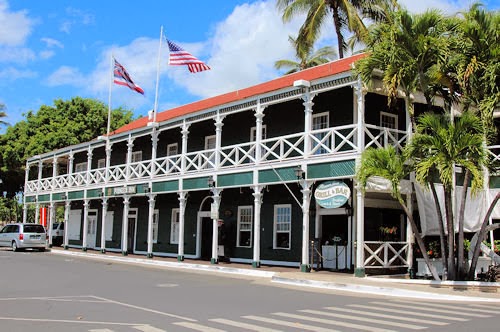In ancient times, the windward coast of the island of Lānai was home to many native residents. Maunalei Valley had the only perennial stream on the island and a system of loʻi kalo (taro pond field terraces) supplied taro to the surrounding community.
Sheltered coves, fronted by a barrier reef, provided the residents with access to important fisheries, and allowed for the development of loko iʻa (fishponds), in which various species of fish were cultivated, and available to native tenants, even when the ocean was too rough for the canoes to venture out to sea. (Lānai Culture and Heritage Center)
The history of Lānai is rich and diverse, spanning first, some 800 years of native Hawaiian residency and subsistence practices (ca. 1000 – 1800 A.D.). Then following 1800, there was a decline in the native population as foreign influences began to grow.
In 1861, Walter Murray Gibson came to Hawaiʻi after joining the Mormon Church the year before; he was to serve as a missionary and envoy of the Mormon Church to the peoples of the Pacific.
The experience with the Church was relatively short-lived; in 1864, he was excommunicated for selling priesthood offices, defrauding the Hawaiian members and misusing his ecclesiastical authority (in part, he was using church funds to buy land in his name.)
By the 1870s, Gibson focused his interests at Koele, situated in a sheltered valley in the uplands of Kamoku Ahupuaʻa. As the ranch operation was developed, Koele was transformed from an area of traditional residency and sustainable agriculture to the ranch headquarters. (Lānai Culture and Heritage Center) In 1872, Gibson moved from Lānai to Lāhainā and then to Honolulu.
After Gibson’s death in 1888, the ranch was turned over to his daughter and son-in-law, Talula and Frederick Hayselden. As early as 1896, the Gibson-Hayselden interests on Lānai, which held nearly all the land on the island in fee-simple or leasehold title, began developing a scheme to plant and grow sugar on Lānai.
They chose the ancient fishing community of Keōmuku for the base of operations. However, before completing the construction of the mill and associated facilities, and prior to the first harvest being collected for processing, the Maunalei Sugar Company went bankrupt.
In the period between 1899 to the 1920s, Keōmuku served as the hub of residency and commerce. Several motor-driven boats were engaged in providing transportation of people and goods between Lānai and Lāhaina. (Lānai Culture and Heritage Center)
Navigating the rough seas and near shore reef waters took exceptional skill. With names like “Akamai” (Smart,) “Naheihei” (The Racer,) “Mikioi” (Skillful,) “Lokahi” (Unity) and “Manukiiwai” (Bird That Fetches Water,) the boats regularly made runs to Lāhainā from Halepalaoa.
The return trip from Lāhainā brought back the mail, various food supplies, along with poi, rice and flour, fresh water in bottles, and passengers – including family members and visitors to the island.
Kupuna, Venus Leinaala Gay Holt, born at Keomoku in 1905 recalled that: “No matter how rough, Noa Kaopuiki knew how to wait. He would keep the engine running and everything. He’d wait. He knew how to count the waves. And we would all hold right there, see everything. And all the sudden, he’d go! He was gone. Right through the channel, gone. And the big waves are coming right after that. Gone on his way to Lāhaina.”
“Our boats ran twice a week to Lāhainā. They always came back with a barrel of poi, bags of flour, or whatever, whatever, whatever. We had sort of a store room with all the things in it… The boat went over and we bought most of our supplies from Lāhainā.”
“We brought in large supplies, by cases. Case of corned beef, case of canned salmon… Every Wednesday and every Saturday, they bought fresh supplies, poi, a whole barrel of poi once a week. We always had rice, and we grew a lot of things down here. We grew a lot of vegetables. We grew sweet potatoes, even down at the beach house. Lots of sweet potatoes were grown for the pigs…” (Venus Leinaala Gay Holt, January 28, 2006; Lānai CHC)




